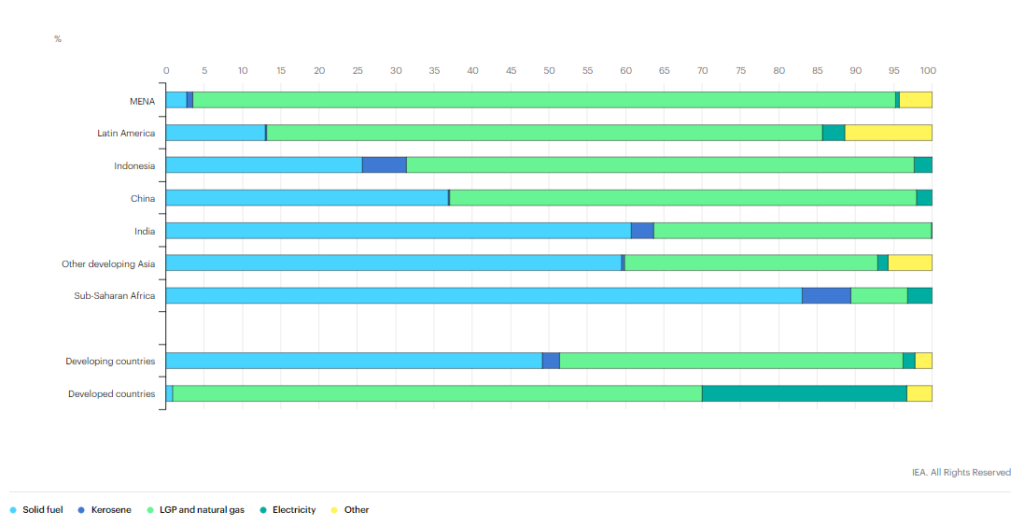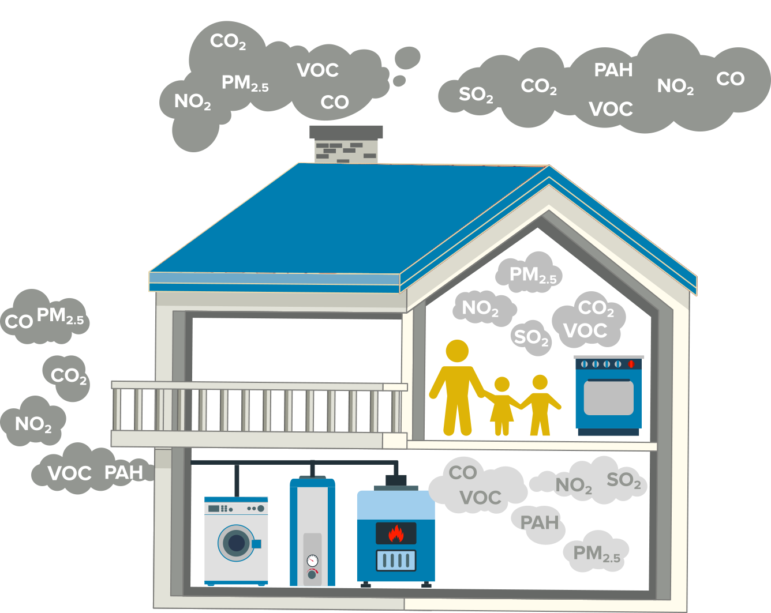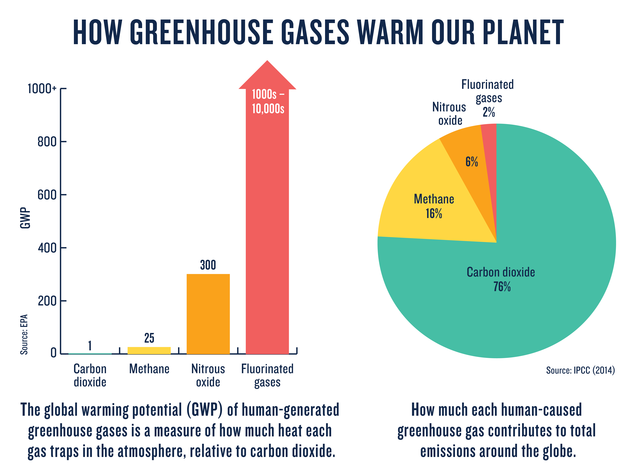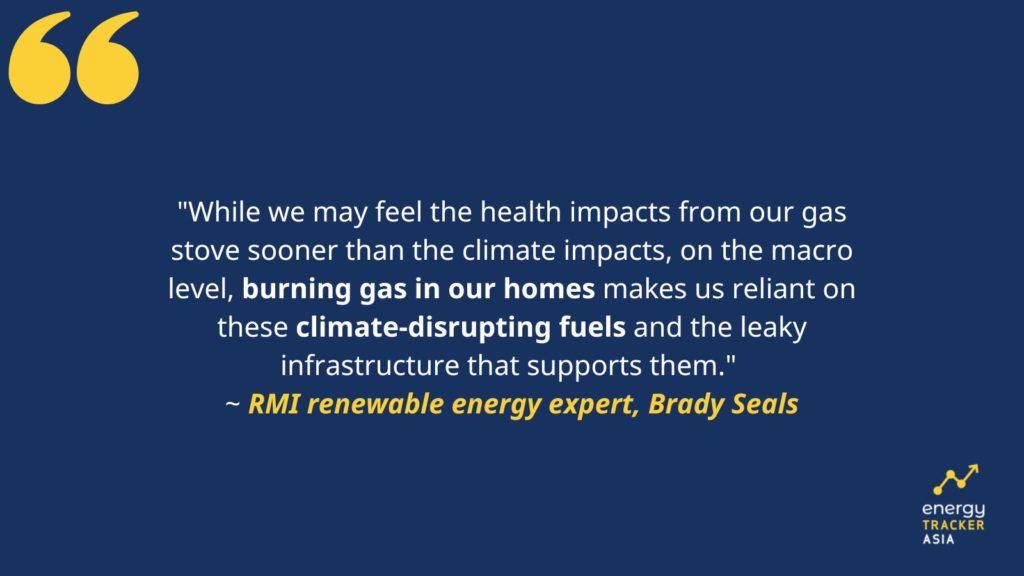Cooking With Gas – The Full Story
05 September 2022 – by Eric Koons Comments (0)
According to the International Energy Agency (IEA), cooking with gas is the most common cooking method. Almost 70% of homes in developed nations use natural gas for cooking, with nearly all remaining households relying on electricity. The natural gas industry wanted this, and they got it. This is different in developing countries, where there is a rough split between solid fuel such as wood burning and natural gas, with kerosene and electric-based cooking having a lower use rate.
However, the use of natural gas will likely increase as many global governments adopt it for future energy needs. This will likely increase the prevalence of gas cooking in many regions – particularly in the developing world.
For example, four major gas cooking regions – MENA (the Middle East and North Africa), Latin America, Indonesia and China – are also investing in expanding their energy infrastructure to accommodate more natural gas. This is raising concerns for the environment, as well as those using it as cooking fuel.

Cooking on Gas – Dangers Health
Indoor pollutants are widely known to affect human health. In most cases, you will hear of issues tied to solid cooking fuels, such as charcoal or biomass, and the effect that burning them has on the respiratory health of a household.
As mentioned previously, these cooking fuels are primarily used in developing countries, and efforts are being made to transition towards less harmful options. However, natural gas is not a reasonable alternative. The combustion of natural gas produces a range of particulate matter and emissions, including carbon dioxide and nitrogen oxide. Both are harmful to human health.
In some cases, nitrogen oxide levels can be between 50% to 400% higher in homes using natural gas for cooking than those using an electric cooktop. Exposure to particulate matter from gas combustion is associated with cardiovascular illnesses. Several studies link natural gas to high indoor pollution levels.

The US Environmental Protection Agency (EPA) states that “indoor levels of pollutants may be two to five times — and occasionally more than 100 times — higher than outdoor levels”.
Such high levels of pollutants in enclosed spaces that individuals use at a high rate can create multiple pathways to developing severe health issues.
Is Cooking with a Gas Stove Safe?
One of the biggest dangers of cooking with a gas stove is the risk of fire. Gas leaks are also a concern, as they can lead to explosions. It is important to make sure that your stove is properly ventilated to avoid any accidents. Additionally, you should always keep an eye on your food while it is cooking, as gas stoves can cause food to burn more easily than other stoves.
Environmental Impacts From Natural Gas Cooking – Gas Stove Emissions
While cooking with natural gas can cause health issues, it also directly impacts the environment. Natural gas is one of the fossil fuels responsible for the ongoing climate crisis.
Compounding the issue, climate change is having severe impacts on the health of people around the world. New research highlights that natural gas cooktops leak and create emissions when not in use. A study undertaken in the US found that methane emissions from these leaks are roughly equivalent to the carbon dioxide released by half a million cars in a year.

For regions with large amounts of gas cooktops, like the Americas and MENA, this is an area of concern for the health of local communities. This is why electric alternatives are appearing in the markets of both developed and developing nations.
Cooking With Gas Stoves vs Electric Stoves
“While we may feel the health impacts from our gas stove sooner than the climate impacts, on the macro level, burning gas in our homes makes us reliant on these climate-disrupting fuels and the leaky infrastructure that supports them.”
RMI renewable energy expert, Brady Seals
The shift to electric stoves reduces demand for natural gas in the larger context of global energy production. Additionally, it increases opportunities for renewables or low-carbon alternatives.
Electric cooking cuts back on a range of emissions as there is no combustion. This reduces particulate matter and methane leaks.
Phasing Out Natural Gas
So far, in 2022, renewable energy production is outpacing demand – a sign that the rapid implementation of low-carbon power is beginning to pay off. This contrasts with the natural gas crisis due to Russia’s war in Ukraine and the worsening climate issues. The need to move away from fossil fuels and a widespread transition in all capacities are clear.
The debate over gas cooktops is a microcosm of the world’s issues with the climate. Natural gas stoves leak methane and produce carbon dioxide and nitrogen oxide. These greenhouse gases exacerbate climate change and lead to health issues. An easy solution is to adopt responsible, electric alternatives.

by Eric Koons
Eric is a passionate environmental advocate that believes renewable energy is a key piece in meeting the world’s growing energy demands. He received an environmental science degree from the University of California and has worked to promote environmentally and socially sustainable practices since. Eric’s expertise extends across the environmental field, yet he maintains a strong focus on renewable energy. His work has been featured by leading environmental organizations, such as World Resources Institute and Hitachi ABB Power Grids.
Read more


